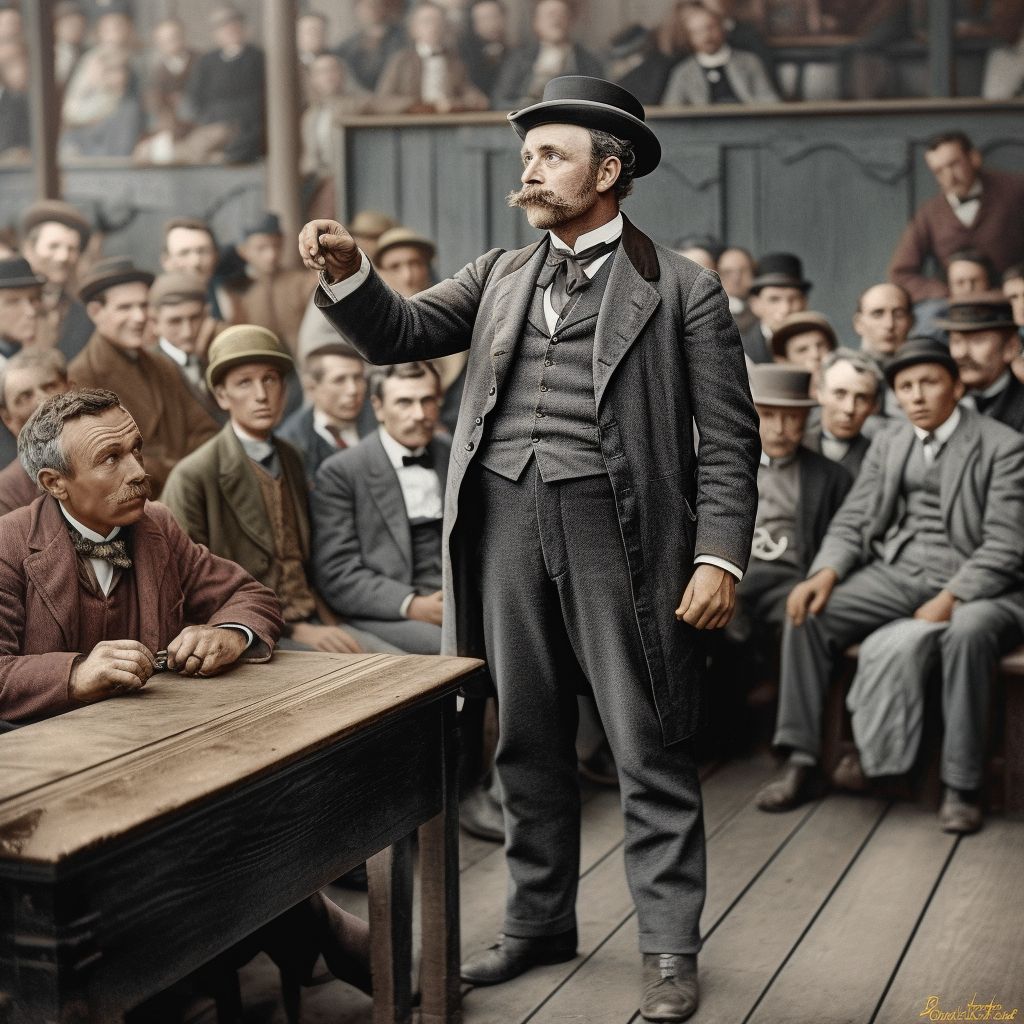Auctioneer
Auctioneering, a profession rooted in the ancient practice of public sales, has long been a cornerstone of commerce and trade. By 1880, the auctioneer profession had evolved to become an essential part of the economic fabric of society, particularly in the United States and Europe. This article provides a comprehensive overview of the auctioneer profession in the late 19th century, examining the role, responsibilities, and significance of auctioneers during this period.
Role of Auctioneers
Auctioneers played a crucial role in facilitating the sale of goods and property, acting as intermediaries between sellers and buyers. They were responsible for organizing and conducting auctions, ensuring that the sales process was fair, transparent, and efficient. Auctioneers were typically skilled in various areas, including valuation, marketing, and public speaking. They possessed an in-depth understanding of market trends and were adept at creating a competitive atmosphere among bidders to maximize profits for sellers.
Types of Auctions
In the 19th century, auctioneers conducted a wide range of auctions, catering to various sectors of society. Some of the most common types of auctions included:
Estate Sales: Auctioneers often handled the sale of personal property from estates, such as furniture, artwork, and collectibles. These auctions were typically organized on behalf of families or executors of wills.
Livestock and Agricultural Sales: Auctioneers specialized in the sale of livestock, farm equipment, and agricultural products, serving the needs of rural communities.
Real Estate Auctions: Auctioneers facilitated the sale of land and property, working closely with property owners, attorneys, and real estate agents to secure the best possible outcomes for sellers.
Bankruptcy and Liquidation Sales: Auctioneers were engaged to sell assets from bankruptcies and liquidations, helping to settle debts and recoup losses for creditors.
Specialty Auctions: Some auctioneers specialized in specific areas, such as art, antiques, books, or stamps, catering to the interests of collectors and enthusiasts.
Licensing and Regulation
In many jurisdictions, auctioneers were required to obtain a license to practice their profession. Licensing often involved the completion of an apprenticeship or training program, as well as passing an examination to demonstrate competency in the field. Auctioneers were expected to adhere to established laws and regulations governing auctions, including the disclosure of relevant information about the items being sold and the protection of both buyers and sellers.
Auction Houses
By 1880, auction houses had become prominent institutions in major cities across the United States and Europe. These establishments served as hubs for the auctioneer profession, hosting a variety of auctions and attracting buyers from various social strata. Some of the most renowned auction houses of the time included Christie's and Sotheby's in London, as well as smaller, regional auction houses that catered to local markets.
Conclusion
The auctioneer profession played a significant role in the economic landscape of the late 19th century. Auctioneers facilitated commerce and trade by organizing and conducting sales of various goods and property, serving the needs of diverse segments of society. As intermediaries between sellers and buyers, auctioneers contributed to the overall efficiency and transparency of the marketplace, ensuring that the auction process was fair and competitive.
Type
Artisan

